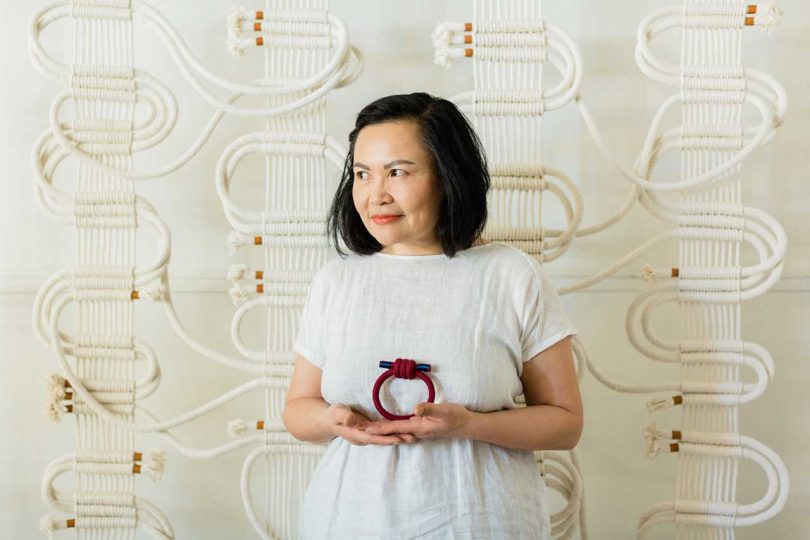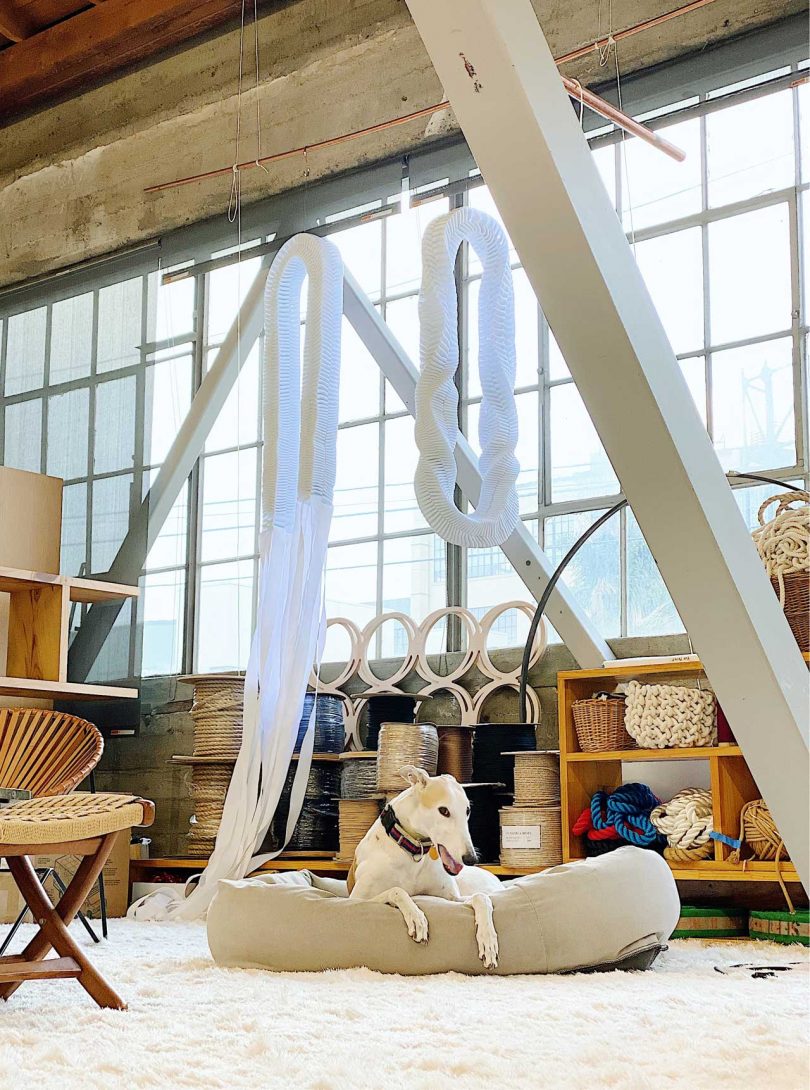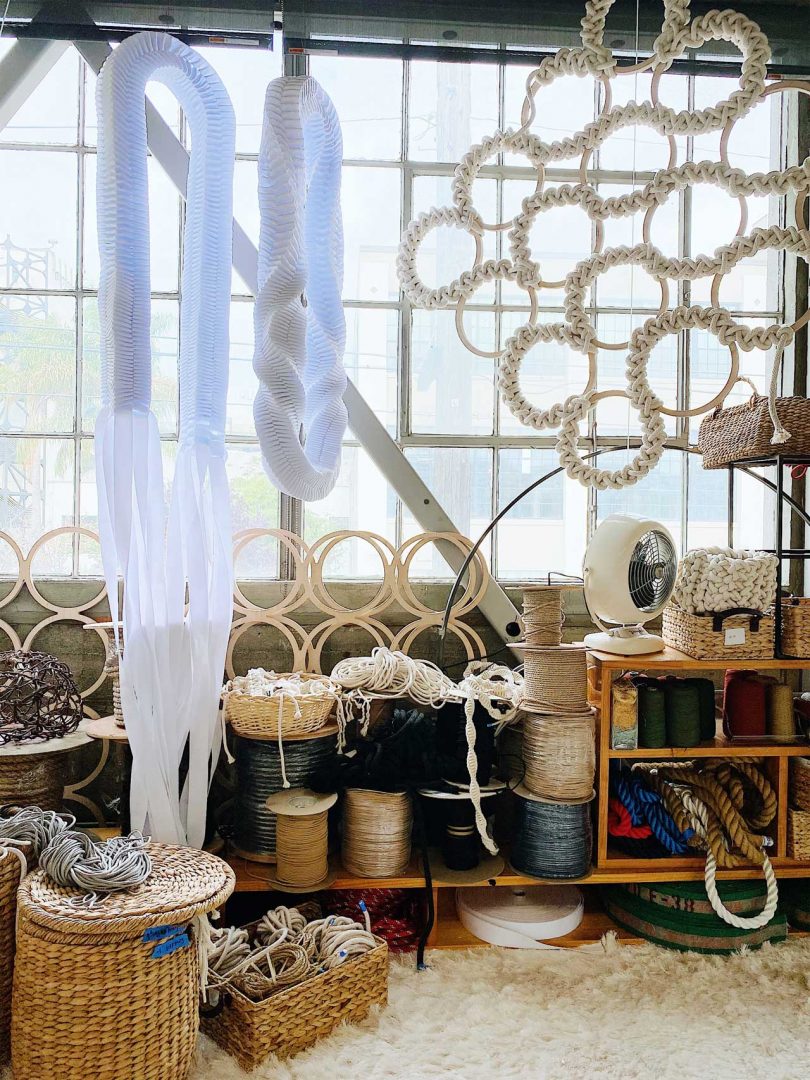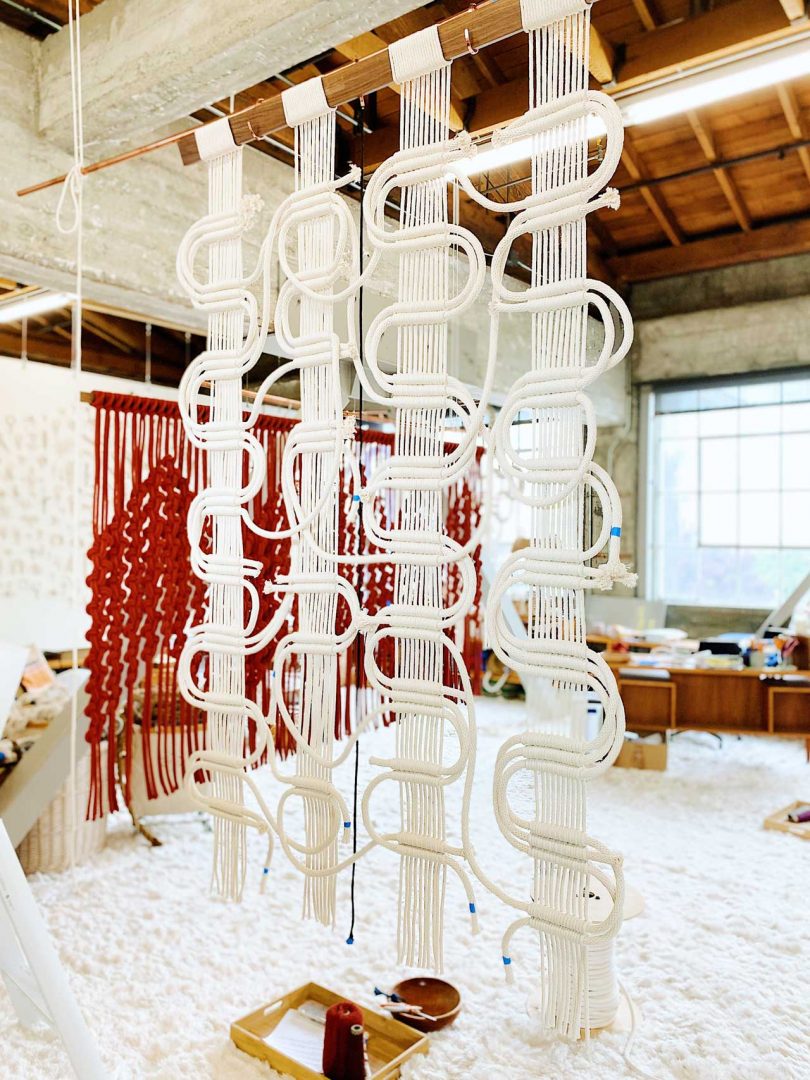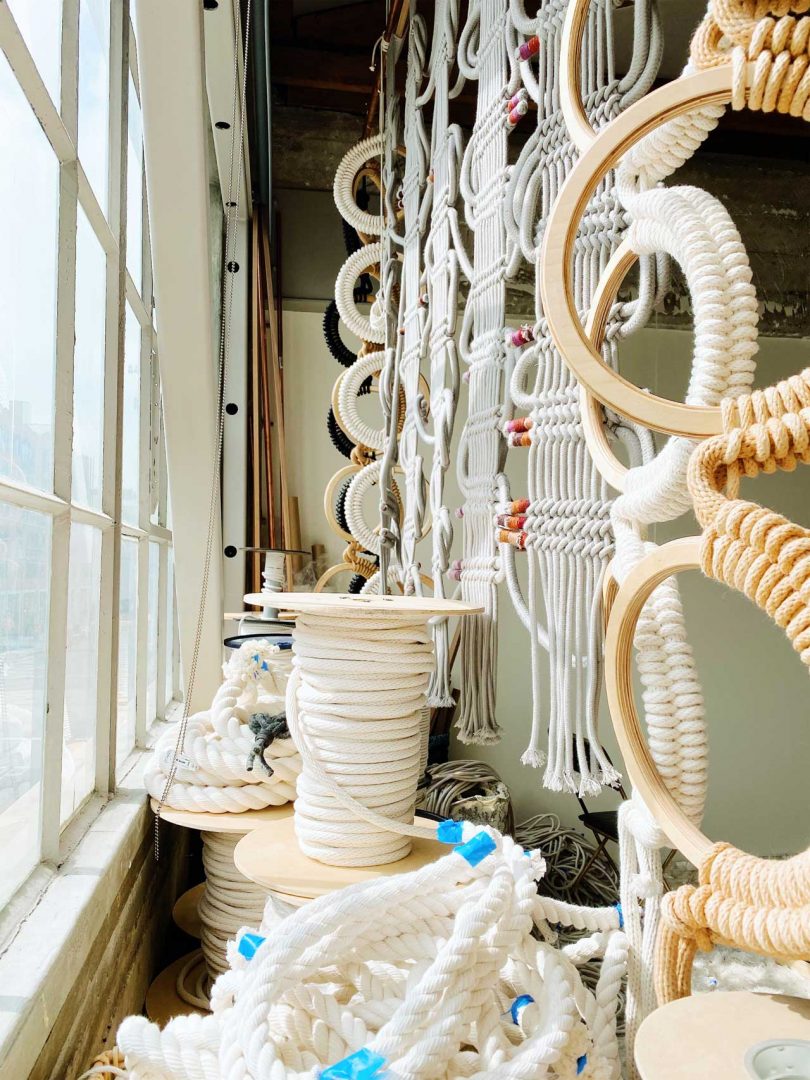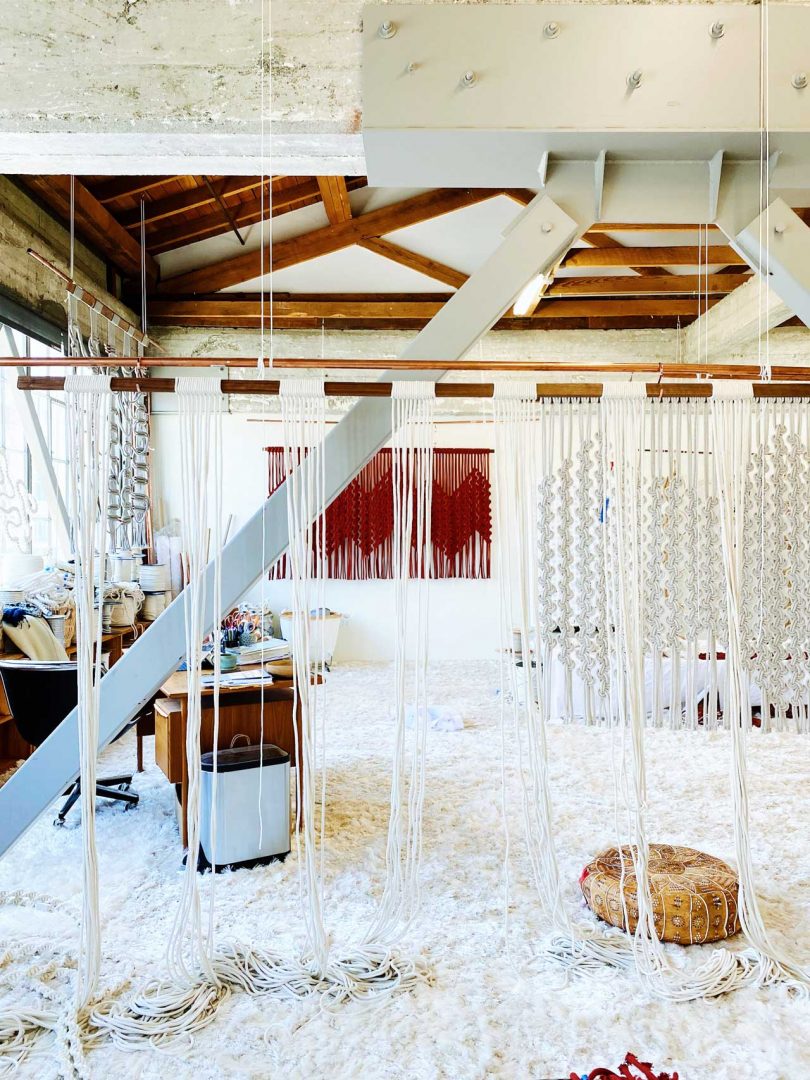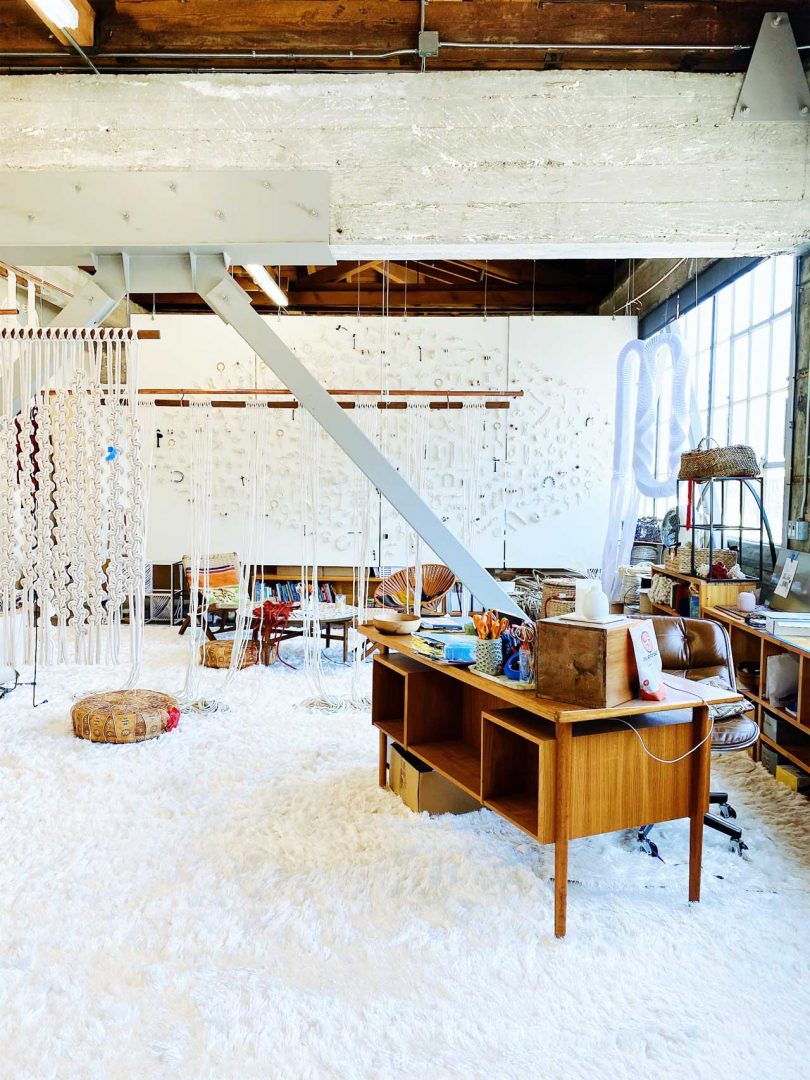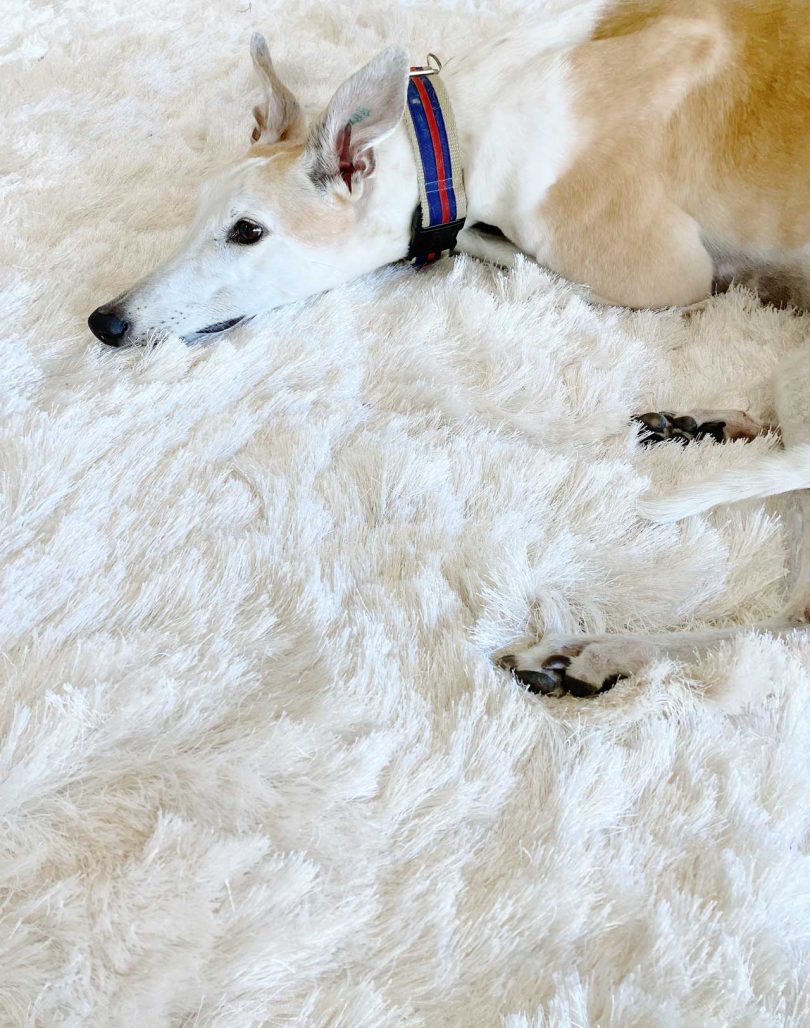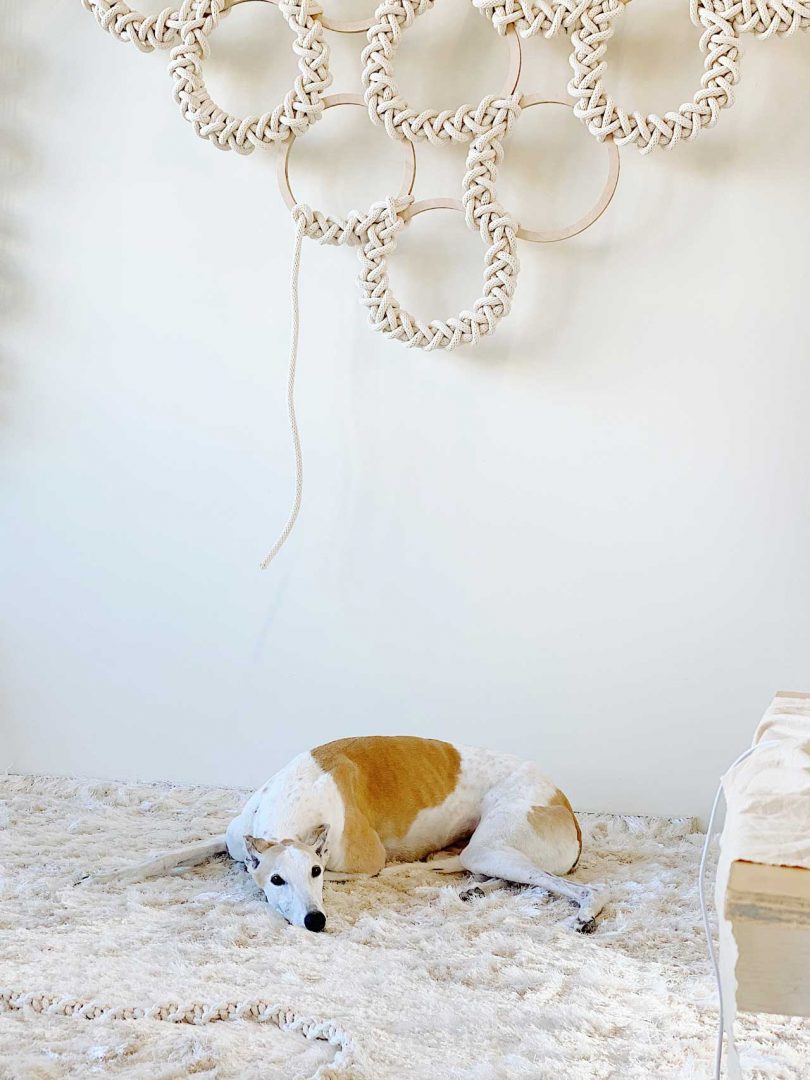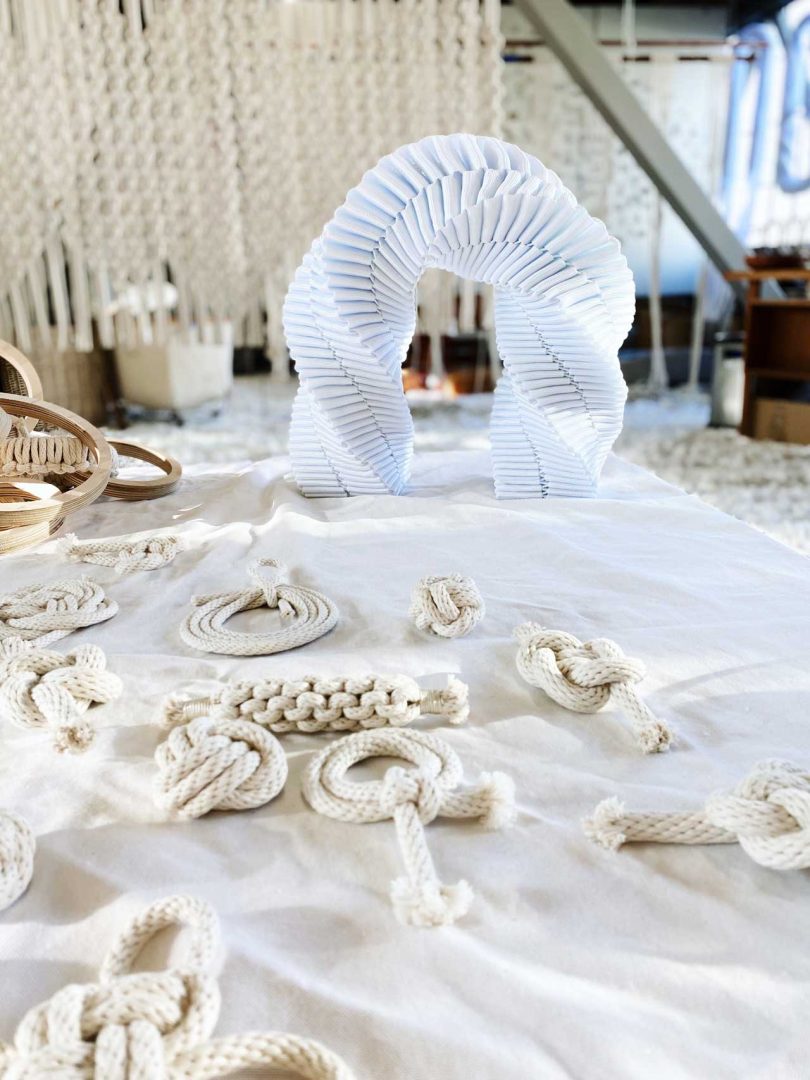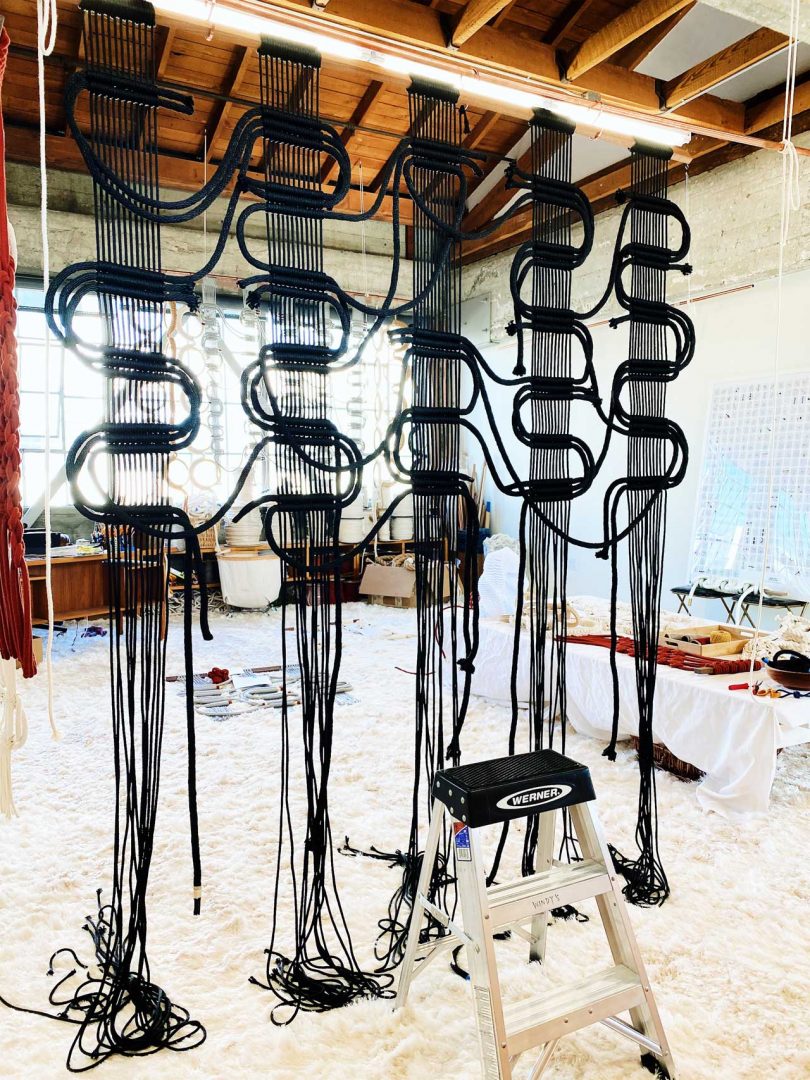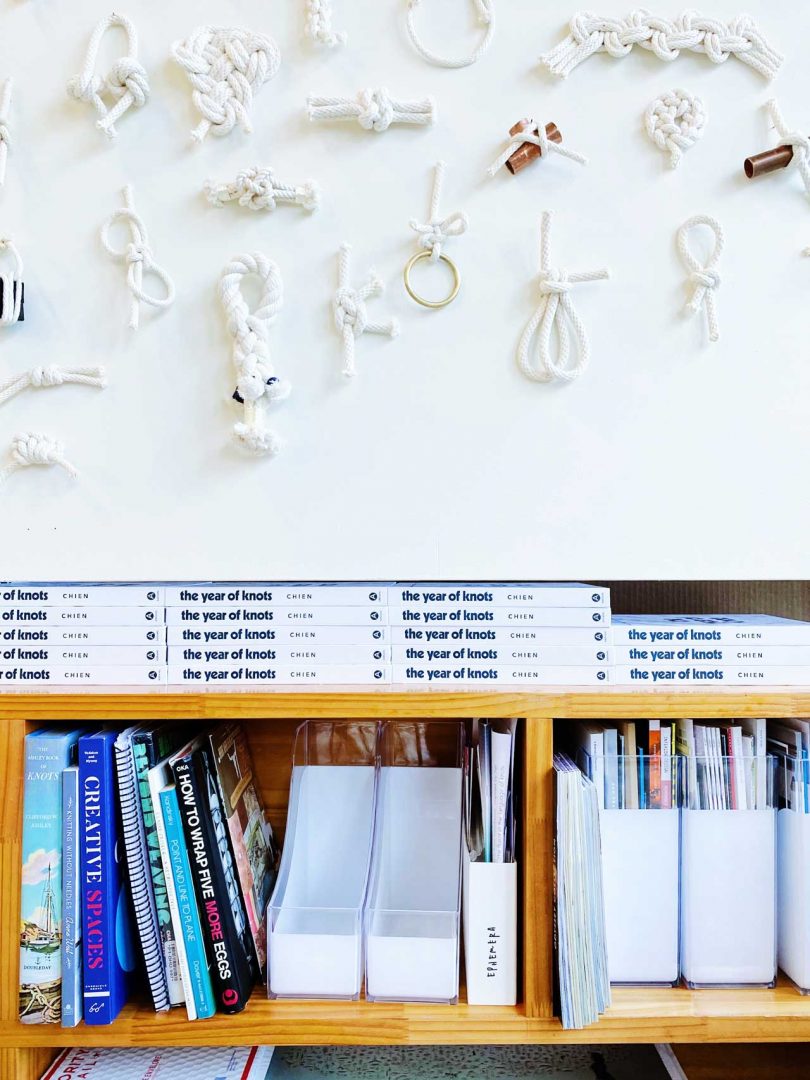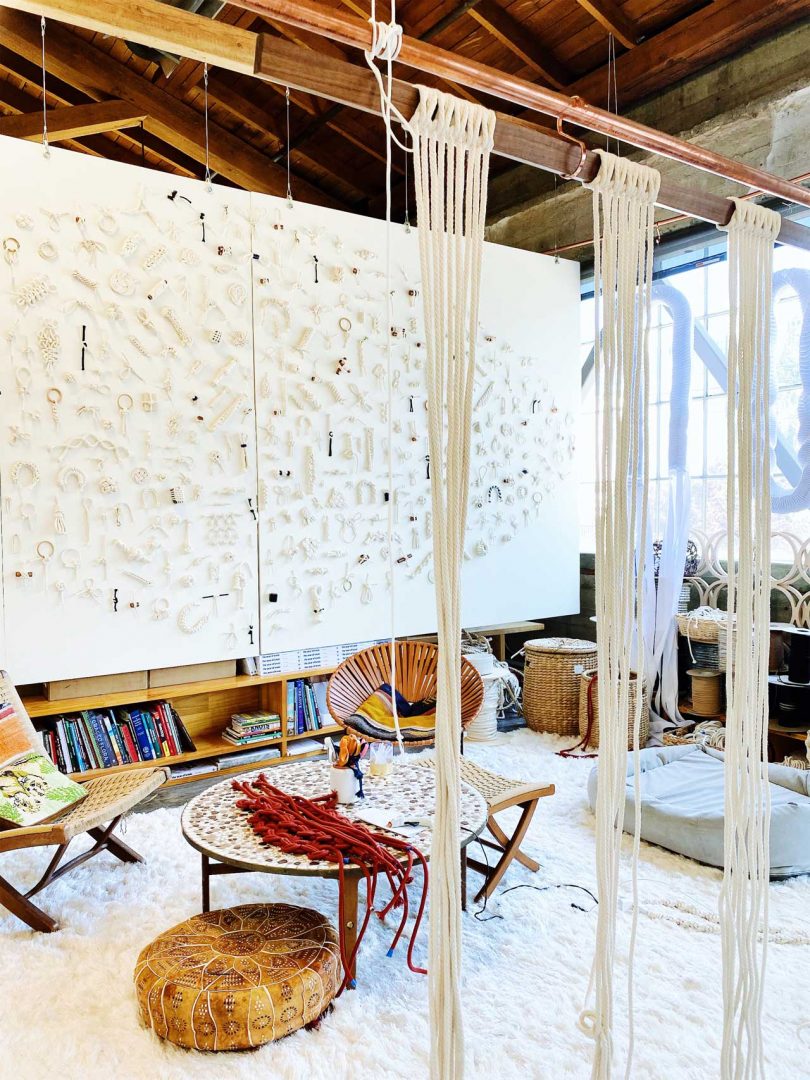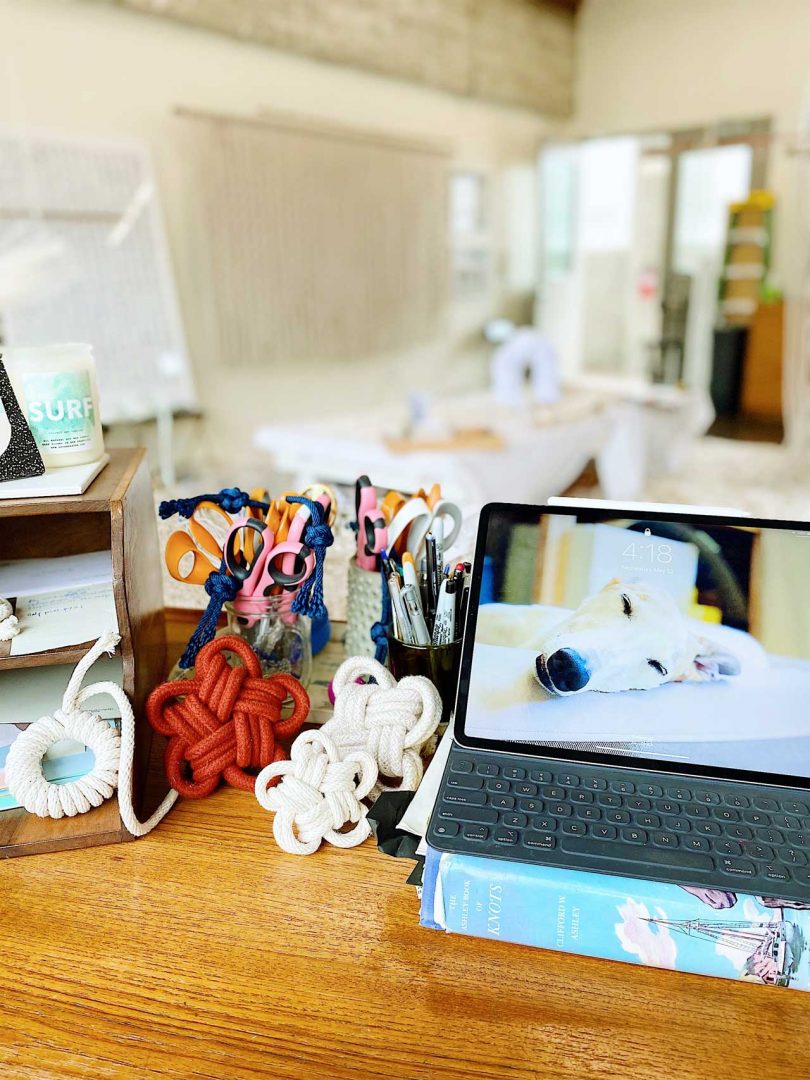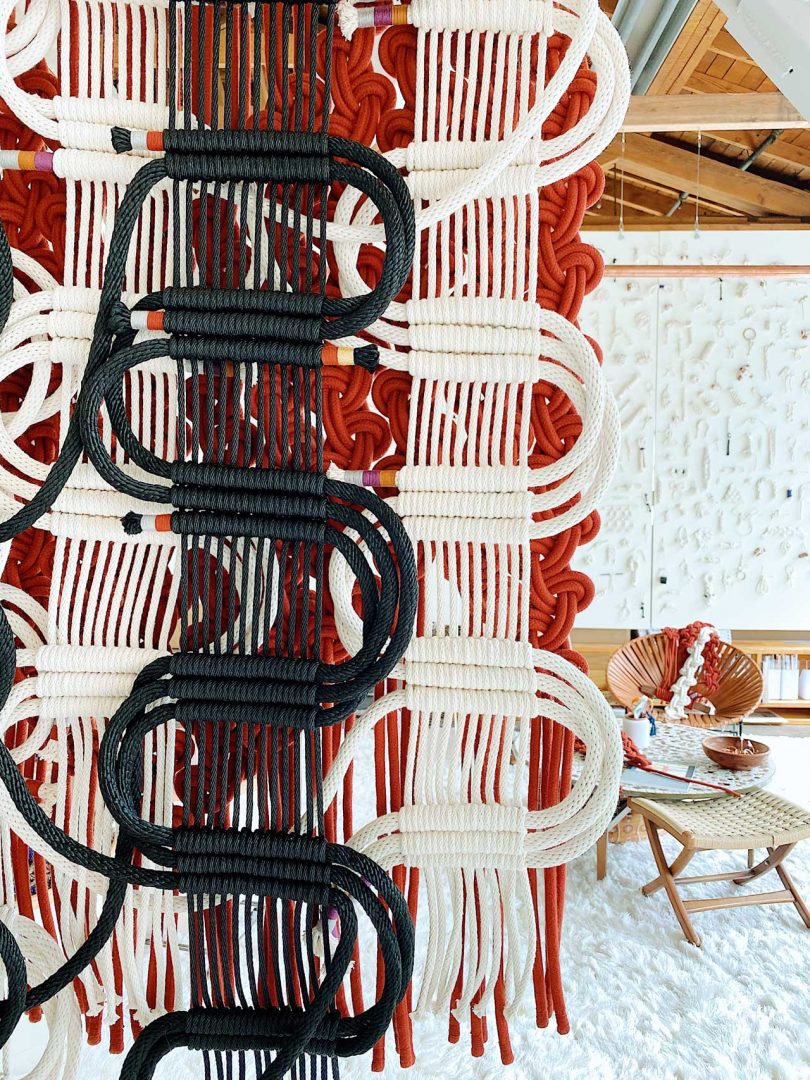Where I Work: Windy Chien
We pop into the studio of fiber artist Windy Chien located in the Heath Ceramics factory to see her knot art and space.
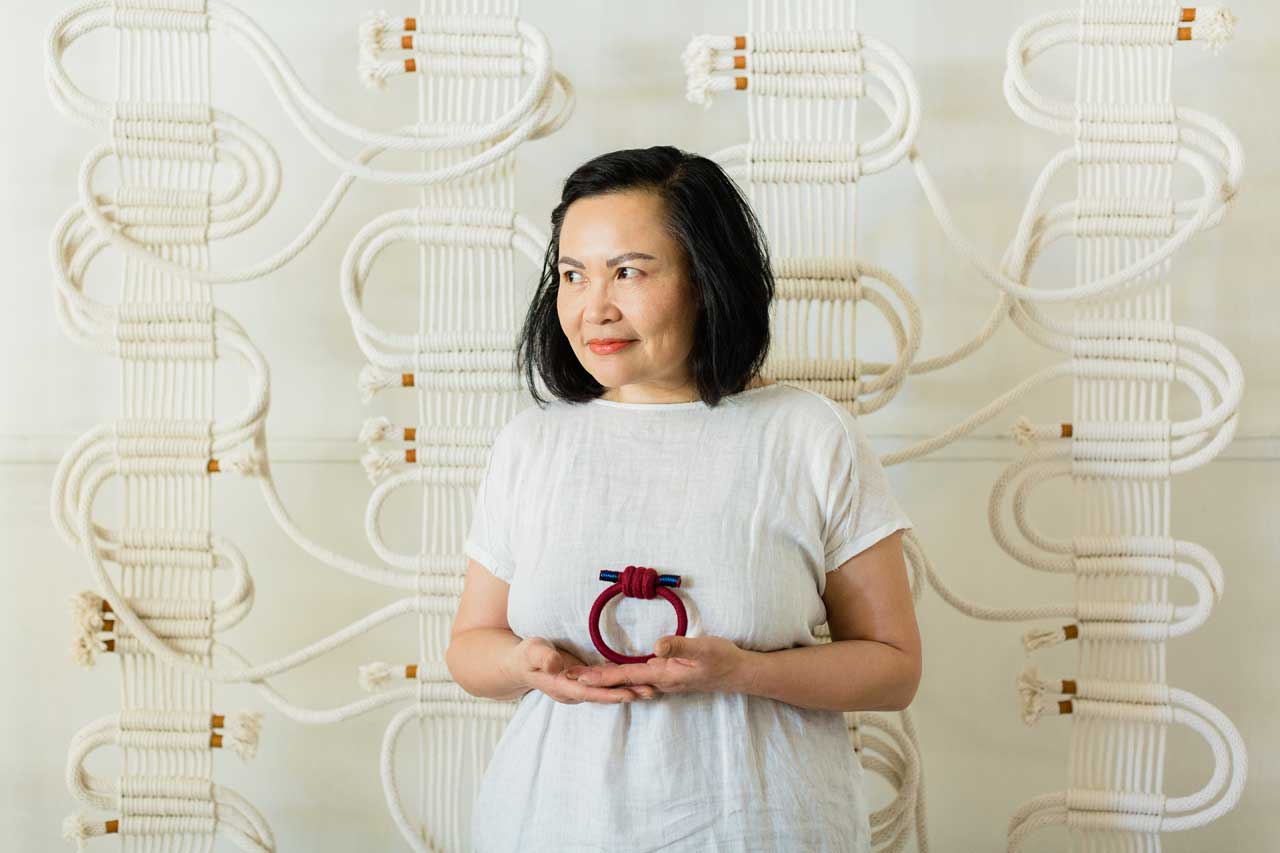
You might not think of knots as being anything other than a way to tie something up or the annoying thing that happens to your necklaces when they get tangled up, but there’s an entire other world out there and it involves fiber artist Windy Chien. After stints at Apple and owning her own indie record shop in San Francisco, Windy found her calling bringing aesthetics to the middle of function, science, and history to highlight what’s most intriguing about knots, and that’s the journey of the line. You may recall she spent 2016 learning a new knot every day of the year for The Year of Knots, which she now displays on her studio walls mixed amongst a sea of works in various stages of progress and size. Today, we pop into her San Francisco studio located on the second floor of the Heath Ceramics tile factory to see her art and space in this Where I Work.
What’s your studio/work environment like?
Serene, cozy, and clean. I’m often playing music and podcasts, and my rescue greyhound, Shelley Duvall, comes with me to the studio each day.
How is your space organized/arranged?
My studio is a private 1000-square-foot space with its own street entrance. It’s a big open space. One wall is all huge windows, and I store my spools of rope and cordage in a long row beneath the windows. Another wall, made of four sheets of plywood suspended above the floor, holds The Year of Knots, which is the project I did in 2016 where I learned one new knot every day of the year. It’s an installation of 366 knots that functions as my palette and main resource, the same way a designer or painter might have a Pantone deck.
Scattered throughout the space are seven pairs of pulleys hanging from rafters off the 20’ pitched ceiling, where I suspend each piece while I’m making it. I raise and lower the works while working, and this is how I take care of my body while enacting the repetitive, physical motions of knotting.
The entire floor is covered in bright white, wall-to-wall, faux fur carpet. I’m a child of the 1970s, so wall-to-wall carpeting is my happy place, but there’s a practical reason for it too: my standard material is white cotton rope, which picks up dirt the second it hits a hardwood floor. With the white shag, I can throw my materials on the floor and know they’ll stay clean.
I’m often working on several commissions at once, along with experimenting on one-off pieces which is my way of thinking with my hands. With that much activity, everything must have a place. I can’t be productive in chaos.
How long have you been in this space? Where did you work before that?
I’ve been upstairs at Heath Ceramics since January 2020. Before that I spent three years in a mid-century police station. My studio there was the old police captain’s office! It was a cool space, but it didn’t have the strong, high ceilings necessary for me to easily make large works, which are all I do nowadays.
Being part of the Heath Ceramics community is a dream come true. Being around like-minded, creative people is incredibly motivating and positive. They have been beyond helpful with sharing resources such as their shipping & receiving department, security, communal kitchen, etc.
If you could change something about your workspace, what would it be?
It’s truly perfect here; the only thing I might eventually consider is a bit more space. I’m going to hire a studio manager this year to handle admin, and am having to think hard about how to have more than one person in this place that feels like my sanctuary.
Is there an office pet?
Yes, my greyhound Shelley Duvall comes with me to the studio every day.
Do you require music in the background? If so, who are some favorites?
I owned/operated an independent record store (Aquarius Records) for 14 years, so my tastes run far, wide, and obscure. Some of my favorite genres are Brazilian tropicalia, Ethiopian jazz, Jamaican rocksteady, Italian prog, outlaw country, German kosmiche krautrock, and more. It’s painful to choose only one, but for years my answer was Os Mutantes, the psychedelic pop trio from late 1960s Brazil, who sounded like Sgt Peppers but stunningly weird.
How do you record ideas?
I conduct my entire business on my iPad. For ideas and sketches, I use the apps Paper and ProCreate. For lists and text, I use Evernote.
What is your typical work style?
I arrive at my studio around 10am and try to work on a current piece immediately, or I open one of my dusty old sailors knotting tomes to learn a new knot. I believe in the concept of flow, which is the state of blissful productivity, where you are working at the edges of your abilities, happily, without any external reward; the reward is inherent in the doing of the thing. Being in flow is the best way to start a day because it makes me feel so good. I avoid email until the afternoon.
What is your creative process and/or creative workflow like? Does it change every project or do you keep it the same?
I work almost exclusively by commission and there is a waiting list. Clients choose amongst my several current bodies of work, each of which sprang from a single, exquisite knot and my desire to find its ultimate expressive potential, to blow it up and give it a greater aesthetic life. We think of knots as functional, and indeed I’d say the vast majority of the almost 4,000 documented knots are functional, but along with the culture, history, and science behind each perfectly-designed knot, I see them as aesthetic objects. My goal is to bring a greater awareness to the aesthetics of knots and, by extension, to explore the journey of the line.
With that said, while I enjoy making my existing bodies of work, I believe every knot is waiting for me to find its most expressive potential, so I’m always looking for periods of free time where I can experiment with new works. I will never run out of curiosity or things to explore. I don’t get creatively blocked.
What kind of art/design/objects might you have scattered about the space?
It’s all my own work, my sailors knotting books, my materials, whatever work is in progress, and all the experiments. I have a lovely collection of artworks made by others, but I keep all of
that at home.
Are there tools and/or machinery in your space?
I was recently given a non-electric, rope-making ‘machine’ (by Schacht Spindle), and am looking forward to making my own rope. I have a glue gun, but try to avoid it as much as possible. I’m a purist, and using glue feels like taking the easy way out when surely a knot will do.
What tool(s) do you most enjoy using in the design process?
Sharp scissors and bent needle-nose pliers.
Let’s talk about how you’re wired. Tell us about your tech arsenal/devices.
I worked at Apple for many years, from the early years of iTunes, to the launch of iPhone and iPad and the App Store. So I’m super savvy with the entire Apple ecosystem. It’s just designed so beautifully, with the user in mind, and with an exquisite design logic. I use my iPad exclusively, with iPhone for Instagram and photo processing.
What design software do you use, if any, and for what?
My work needs only the sketching and drawing apps listed above. Occasionally, I will open my old MacBook to use SketchUp, which annoyingly has not made it to the App Store yet, for complicated projects that benefit from a 3D model.
What’s on your desk right now?
A dozen scissors, ancient knotting books, and various Doughnut and Star Knots.
Is there a favorite project/piece you’ve worked on?
I could never choose between all my babies, but a favorite recent project is the debut of a new body of work, the Hitching Posts. This is installed in Las Vegas.
Tell us about a current project you’re working on. What was the inspiration behind it?
I recently made a Linescape for Square, the payments company based in the Bay Area. They wanted something bridge-inspired, so I used a very curly knot that is rather counterintuitively good for creating sharp angles and straight lines. We did it in a color close to International Orange, the color of the Golden Gate Bridge.
Do you have anything in your home that you’ve designed/created?
I own a classic San Francisco-style Victorian, and I put the first Helix Light Chandelier in my bay window. I also designed the paint scheme in the attic, which is 1970s-style long lines running at angles along the pitched ceiling, and done using the Pendleton Glacier Park stripes. I designed the exterior paint scheme of the house – horizontal ombré stripes running yellow-orange-red on the front and yellow-green-blue in the backyard.
Photos by Windy Chien.

